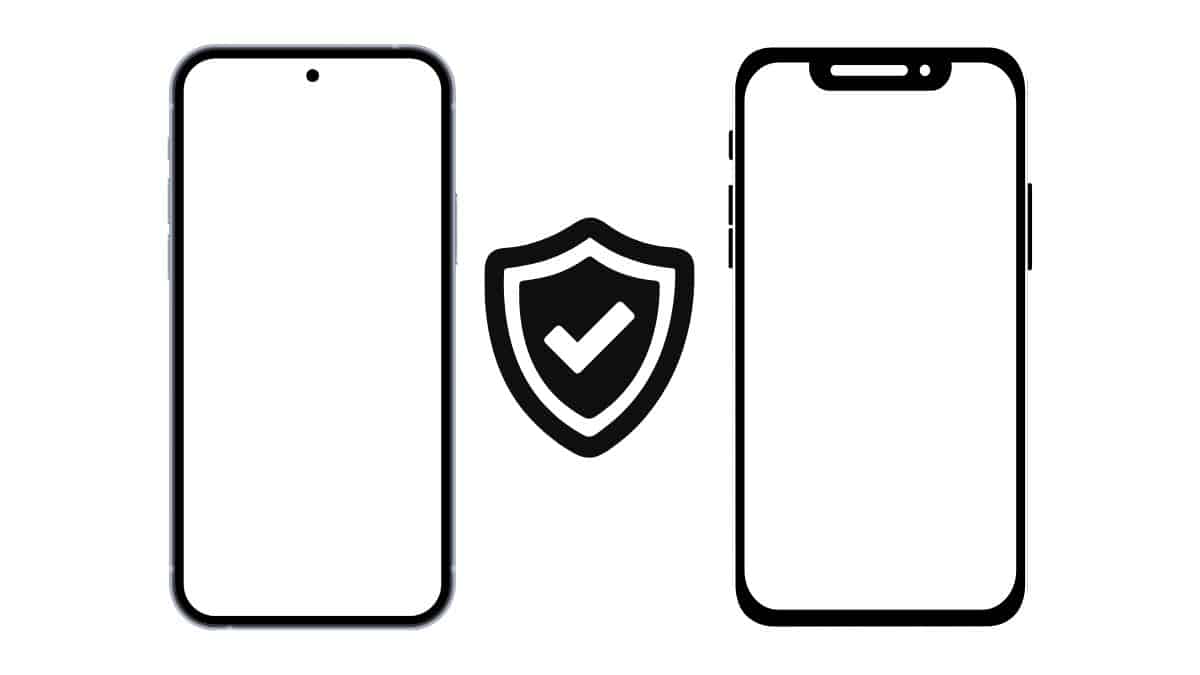HIGHLIGHTS
- Introduction to mobile phone security
- In this article we explore about some tips that we need to consider for mobile phone security
- Mobile Security Threats

These days mobile phones is essential part of our life for daily purpose uses, so it is important for us to ensure about our mobile phone security infact our data security which is present on mobile phones. As the cybercrime is very common in these days, hackers are able to control your personal data present on mobile phone like email, bank account details, etc. We need to consider tips to mitigate or make safe our phones from these types of unauthorised activities.
Mobile security can then be described as a general term that defines all the protection procedures and features that are put in place to protect our personal as well as business data that’s stored and/or shared using our mobile devices. In this article we explore about some tips and tricks that we need to consider for our mobile phone security.
Mobile Phone Security
A smartphone can be considered to be one of the essential gadgets used in our daily lives for a majority of people. The days that mobile phones were just used for calling somebody or typing a text message are over , they are small computers now with a multiple of applications, starting with social networking and ending with mobile banking. The dependency level on the phone along with the quantity of data accumulated in it is rather high so the phone security should be considered to be rather important.
Mobile Phone security, in general, is one of those areas that one never knows how important it is until one loses the security and then the impact becomes overwhelming. All practical knowledge and a vast amount of information that people use in their daily life is tightly packed into small hand-held devices called smart phones. Find out how to minimize the risk that contains the use of mobile phones as attackers opt to launch their attacks. Today’s mobile ‘phone’ is a computing device, digital communication storage transferring, location finder, and sound and video capturing apparatus. It is a mobile bank and the place of interactions with friends, a gallery of images, etc.
Tips For Mobile Phone Security
Keep your phone locked:
- In case the device is lost of stolen, the perpetrator is capable of accessing the individuals personal information. To counter this, it requires a hold on the lock of the screen. Whether this is a passcode, pattern, fingerprint, or face recognition entirely depends on your decision and the features available on your device.
Choose a password for your phone and the applications that is easy to remember yet quite complex:
- Develop a good password for your Smartphone. Most of them are secured with a password; if an input password attempt fails a number of times, the phone will lock, disable and in some a destroy all data. Research has indicated that many business users do not modify the mobile devices default passwords or use second factor authentication. This is especially the case where organizations set up very poor passwords, ones that any hacker could easily crack.
Sensitive yourself to the unwanted text messages:
- Mobile malware can attack the text-messaging capacity of your phone, so it is not safe to send credit card details, important private information, etc, through text. Similarly, the text messages that come in should also not be trusted completely.
Have you seen the lock symbol on your browser:
- The padlock icon in the browsers location bar shows that you are in a secured website and that the site you are visiting has a current security certificate. Be on the lookout for this when typing in your address, payment information, or even sending emails while using the mobile browser.
Data Backup:
- Among the basics of mobile security, data backup is considered to be one of the most essential activities. It strengthens the guarantee that in case of loss of data, you can promptly recover it.
- Learn to back up automatically with the features available in most of the mobile devices. Backups should be kept in a secure place either in the store’s infrastructure or on a cloud.
Regular Updates:
- This is important so that the mobile devices stay secure and updated in due time. These can sometimes contain security fixes for the identified bugs that aim at boosting the general security of the device.
- Always turn on the respective features that allow over the air updating on all the devices to enhance the security of the system.
Encrypt your data:
- Smartphones are sources in their own right and most of the time contain a large amount of data that people refer to constantly. It means that if at any one time your phone gets lost, or stolen then the content that the phone holds may be at risk like emails, contacts, and financial information. For augmenting this protection on information on a mobile phone one can always encrypt it. This is data that is recorded in a format that cannot in any ways be interpreted to mean or understand something. However, it is only obvious that the majority of the mobile phones that are in use and currently in circulation within the society have added encryption that can easily be regulated through the phone’s security section.
To check if your iOS device is encrypted:
- To check whether an iOS device is really encrypted, the following steps should be taken:
- The next step that the user has to make is to navigate to the appropriate setting tab/sub tab.
- The final page you should be directed should be the Touch ID & Passcode; tap it.
- This action will bring up the lock screen code that you will have to input.
- Look down the page – if your phone is encrypted at the bottom of this page it should read; ‘Data Protection is enabled.
To encrypt an Android:
- First, always ensure that the device is charged and, preferably charged to at least 80% and above.
- Now let me mention that for proceeding further it’s better if the phone is not rooted, if it is, it needs to be unrooted.
- Then >> Security >> Encrypt Phone.
- If you intercalate the encrypting process, or otherwise, if you do not charge and unroot your device all data can be deleted. Encryption can take alone an hour and even more.
Mobile Security Threats:
Jailbreaking and rooting:
- Conclusively, jailbreaking and rooting is the process of attaining privileged control for iOS and Android mobile devices. Some connect their mobile devices and make them jailbroken or rooted in order to remove unwanted default application or install application from untrusted market – but it is dangerous. Additional permissions can lead to exposure of information thus the impact by the attackers.
Spyware:
- Spyware can gather or utilize an individual’s private information hidden from his or her insight. The information that spyware tends to spy on includes call logs, messages, telephone location, website visited, contacts saved on the device, emails, and photos. This information can be used by another person, hackers for example, for the purpose of identity theft or any form of fraud.
Network threats:
- Mobile appliances are, in general, at least bi-connected. and sometimes more. The ones that are well known are cellular network connection, Wireless fidelity commonly known as Wi-Fi, Bluetooth and Global positioning system often known as GPS. Any of these points of connection can be taken advantage by hackers to control a certain gadget, deceive the user or infiltrate into a corporation’s network. For instance; there is what is called WiFi spoofing; which involves an attacker creating a copy of an open WiFi network in order to sell sensible data that the actual network processing.
- As for the safeguards, the recommendations are to turn antennas that are not in use off and ensure that the security settings are correct to avoid unauthorized connection to the WLAN.
Physical threats:
- Mobiles are of small sizes and they can easily be snatched. Unfortunately, they also get lost pretty often to the extent that it becomes pretty necessary to incorporate the use of a map. Namely, with regard to device security, a stolen mobile device is a goldmine for a villain since the owner hands over他們his/her identity and resources over to the thief on a silver platter. Here, the use of strong passwords and turning the device lock when not in use will assist in covering physical risks that affect mobile devices. Anti theft tracking software also enables a phone that has been lost to be retrieved.
Conclusion:
As we use mobile phones daily, so it is important for us to understand how to make safe our mobile phones from unauthorised activities with the help of some safety tips given in this article because a mobile carry lots of information about us which is very crucial. Mobile companies also working on phones to make it more safer from its previous version that is good for todays generation who suffer from various types of cyber crimes.
FAQs
What is the first step in securing your mobile device?
Make sure all phones require a passcode or fingerprint verification before they can be used. This will help keep the information on it secure if a smartphone is lost or hacked. Use mobile security software.
What security precautions should you take with your mobile devices?
To avoid that, always update your firmware/device. Major mobile device firmware companies, such as Google’s Android and Apple’s iOS roll out new updates from time to time. Most of those updates act as a security patch to known vulnerabilities on your device.


